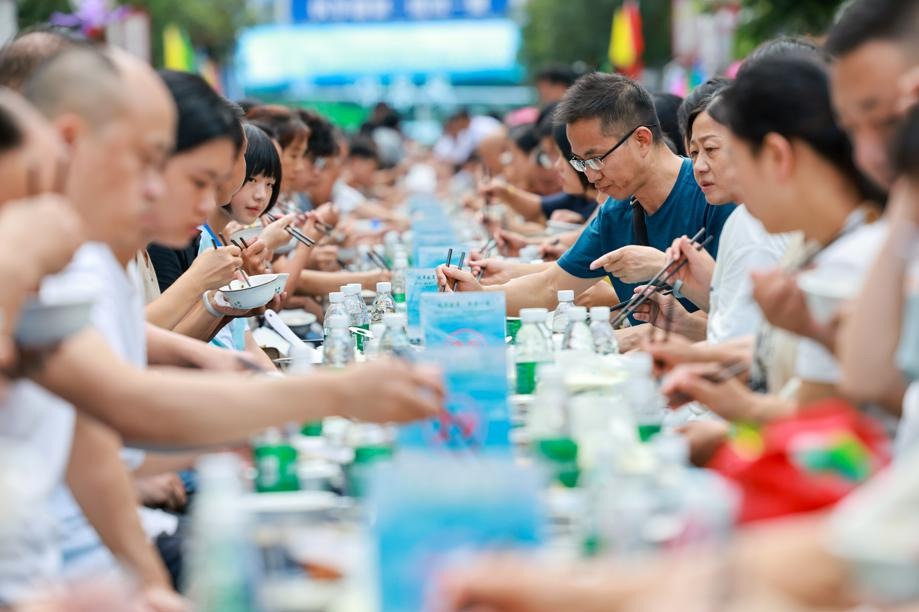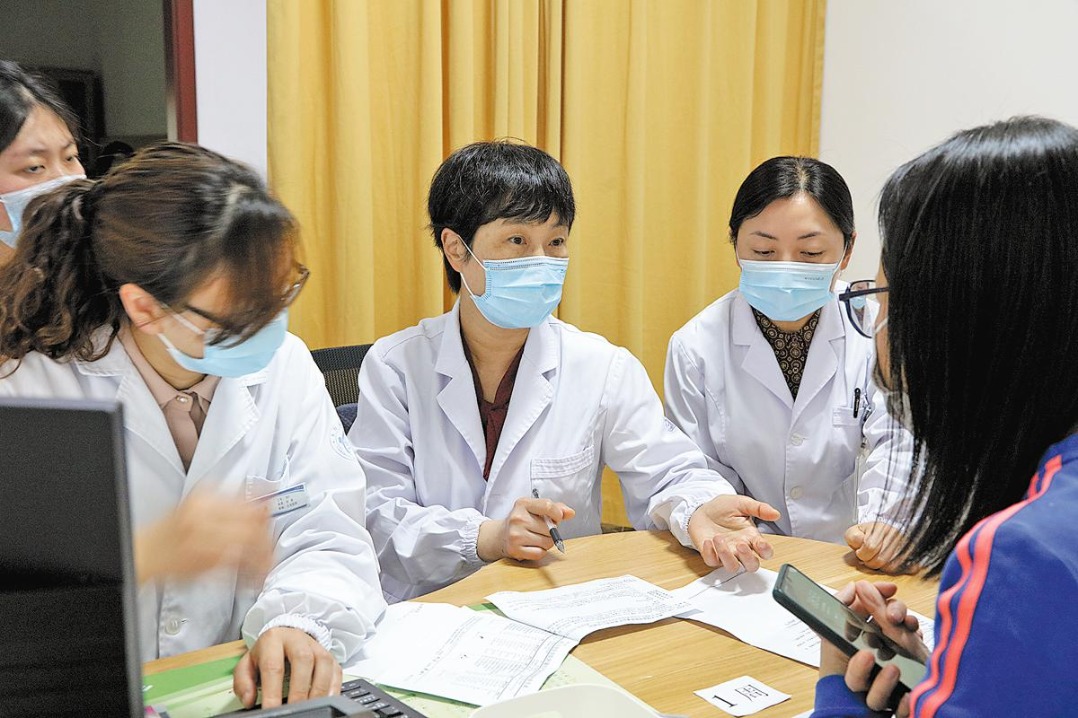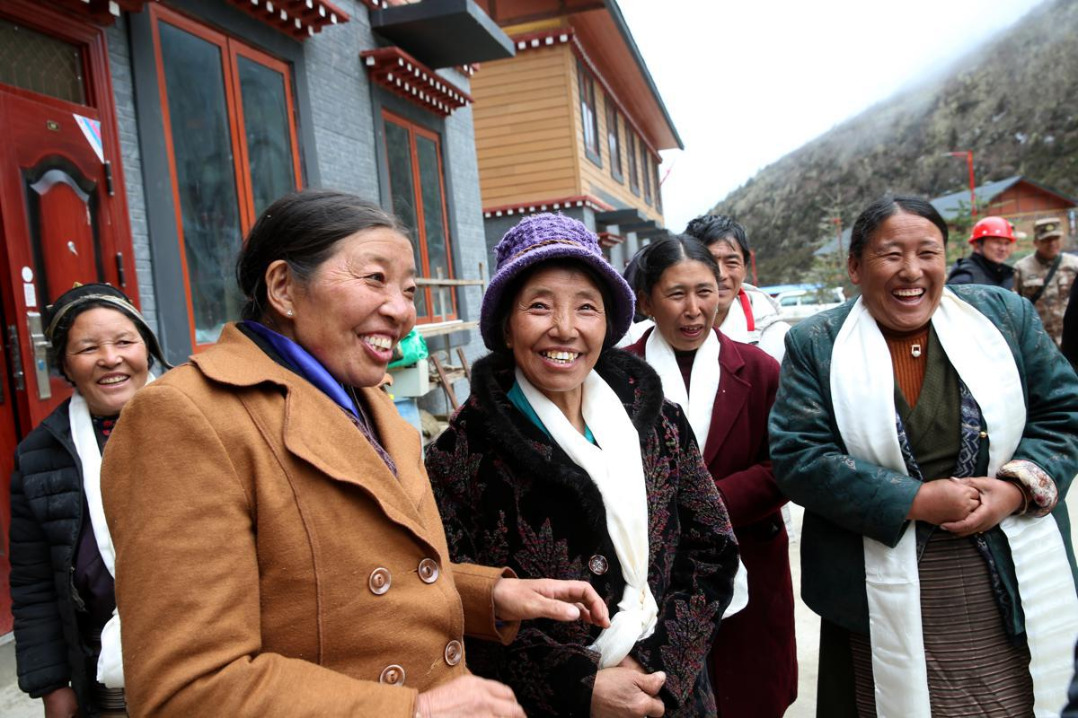Authorities aim to narrow the nation's wealth gap

Experts say income distribution system not about 'robbing the rich to aid poor'

Central authorities endeavoring to narrow China's wealth gap and promote common prosperity are looking at the fast-expanding charitable sector as one of the routes to make a breakthrough in the "third distribution" of social wealth.
Experts said voluntariness and transparency are the bedrock of philanthropic efforts, and lashed out at misinterpretations that the government is "robbing the rich to aid the poor".
China's top leaders said in August that they want a three-tier income distribution system to balance the efficiency and fairness of economic development. The aim is to expand the size of middle-income groups and create an olive-shaped income pattern with relatively few poor or rich people.
Public donations, which have soared as Chinese pockets have gotten deeper over the past decade, have long been referred to by charity workers as the third distribution.
Chinese economists have dubbed salaries, investment returns and other forms of income the first distribution, driven by the "essential factors of production" such as labor, capital and skills.
What they call the second distribution includes government-led wealth redistribution efforts such as taxation and transfer payments, with the aim of reducing inequality resulting from the market forces dominating the first distribution.
The term "third distribution "entered China's political discourse at a gathering of the Communist Party of China in 2019. The attendees agreed to bolster the development of the charitable sector and let the third distribution play a more prominent role in social governance.
In March, the term made its way into the country's 14th Five-Year Plan (2021-25) and ranked among a host of longer-term socioeconomic targets set for 2035, when China aims to "basically achieve socialist modernization".
Deng Guosheng, a professor of NGO studies and social innovation at Tsinghua University in Beijing, said that as wealth has accumulated, Chinese society has reached a stage where high-income groups and profitable businesses are well capable of giving back to society.
But he argued the paybacks are voluntary and love-oriented, and are not aimed at robbing wealthier people.
Deng maintained that donations will not be perceived as a privilege of the wealthy or big enterprises because ordinary people can also contribute through small-sum donations and voluntary services, which are more resilient in times of financial hardship. "Money or energy, give whatever you have to help," he said.
Gini coefficient
China embraced market-oriented reforms in the late 1970s and prioritized development of coastal and urban areas. Former leader Deng Xiaoping, architect of the reforms, said in the early 1980s, "Let some people get rich first." He pointed out with foresight that the wealth generated by the rich would eventually spread to broader society.
Deng was right. China was an impoverished nation in 1978 with a per capita GDP of $156. However, it surpassed Japan as the world's second-largest economy in 2010 and became known as the "world's factory" because of its manufacturing prowess.
China's per capita GDP surpassed $6,100 in 2012, prompting the World Bank to designate China as "an upper middle income country". The number reached $10,000 in 2019 and is projected by Chinese economist Justin Yifu Lin to exceed $23,000 in 2035.
The flip side of the galloping economic advancement has been rapidly widening income inequality.
China's Gini coefficient - a commonly used estimation of inequality - was 0.18 in 1978. A coefficient of zero indicates a perfectly equal distribution of wealth within a population, while one represents perfect inequality. The number peaked in 2008 at 0.491, dropped to 0.47 in 2012 and then embarked on a downward spiral after China launched a sweeping antipoverty drive. It was 0.468 last year.
Still, urban residents' disposable income was almost three times that of rural residents in 2019. Premier Li Keqiang said last year that about 600 million Chinese earn about 1,000 yuan ($141) a month, which is barely enough for rent in mid-sized cities.
Deeper pockets
The public's zeal for philanthropy emerged more than 30 years ago, when the Beijing-based China Youth Development Foundation launched Project Hope to help rural students pay for education and maintain upward social mobility.
But Xu Yongguang, who helped roll out the program, described the program's donors in an online article as "poor people who are eager to help those who are poorer", in a nod to the lack of institutional donors and systematic policy incentives.
As Chinese have acquired deeper pockets, public and corporate donations have soared.
The fervor for charitable deeds has also been fueled by national grief generated by the magnitude 8 earthquake that ravaged Wenchuan in Sichuan province in 2008, and the national pride in Beijing hosting the 29th Summer Olympic Games.
The philanthropic mood has also led to a surge of crowdfunding efforts on social media that aim to pay the heavy medical bills of financially strapped families.
The massive amount of money flowing through charities or informal groups sparked transparency concerns and prompted the National People's Congress to ramp up legislative efforts.
The concerns erupted in 2011, when a woman named Guo Meimei posted photos of her extravagant lifestyle online and claimed to work for the Red Cross Society of China-the country's main provider of humanitarian assistance. Although it later emerged that she had nothing to do with the organization, an investigation exposed management flaws.
In 2016, China enacted the Charity Law, restricted fundraising qualifications to a small number of charities with perfect credit records, and made it compulsory for them to disclose how they plan to spend the money.
The 2020 Blue Book of Philanthropy said China's public donations reached 133 billion yuan in 2019, up almost 5 percent year-on-year. The value of the year's voluntary services was estimated at about 90 billion yuan. The Hurun China Philanthropy list in 2019 showed 114 entrepreneurs donated 22.5 billion yuan, up 3 percent year-on-year.
The trend has been successfully leveraged by authorities in recent years to help fight rural poverty, COVID-19 outbreaks and disasters, and to aid major national strategies such as rural vitalization.
The latest announcement aimed at bolstering the third distribution has prompted major businesses to step up their charitable endeavors.
Internet giant Tencent pledged to set aside 50 billion yuan to promote common prosperity. It had already announced a 50 billion yuan social responsibility plan to bolster sustainable development earlier this year.
E-commerce conglomerate Alibaba followed suit, unveiling a project to donate up to 100 billion yuan before 2025 to help rein in the wealth gap.
Xu said the political push for the third distribution is undoubtedly a boon to the development of charitable undertakings.
"Only by insisting on voluntariness and transparency and taking social trust as the lifeline of the third distribution can we ensure the smooth progress of the system," he said.
- Organic agriculture forum unites global experts in Datong
- Guangdong and Macao launch cross-border medical transfer services
- African, Asian govt officials learn from Shenzhen's economic success
- Mainland slams Lai Ching-te for being US arms dealer's ATM by increasing defense budget
- Arab nations strengthen cultural ties with Ningxia
- China transport sector posts steady seven-month growth





































